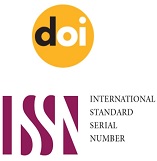Being a woman and learn mathematics in time of covid
DOI:
https://doi.org/10.26490/uncp.alboradaciencia.2021.1.980Keywords:
Learning, mathematics, woman, problem solving, COVID - 19Abstract
This article is based on the educational feminist phenomenological qualitative method, which includes the real feminine experiences felt by women, when observing from below in the feminine mathematical learning in the time of COVID-19. To mitigate the inequality between men and women in mathematical learning, we need to use the procedures to solve mathematical problems in everyday feminine difficulties in order to think logically, the semi-structured interview technique was used, giving it an adequate and timely solution, expanding these resolution procedures in society.
References
González, J. (2000). Políticas públicas en material de género y educación: análisis del caso mexicano. En: Construyendo la diversidad de nuevas orientaciones en género y educación. México. Porrúa.
Herrero, R. (2010). La imagen de la mujer en la prensa entre 1910 -1915 y 2000 – 2005: Estudio comparado. Tesis Doctoral. Recuperado de https://eprints.ucm.es/11025/1/T32151.pdf. Universidad Complutense de Madrid. Madrid.
Martínez, M. (2004). Ciencia y Arte en la Metodología Cualitativa. Recuperado de https://www.academia.edu/29811850/Ciencia_y_Arte_en_La_Metodologia_Cualitativa_Martinez_Miguelez_PDF. México: Trillas.
Ruiz, Y. (2011). Aprendizaje de la matemática. Revista digital para profesionales de la educación. Federación de enseñanza. Andalucía – España.
Silva, E. (1984). Situación laboral, legal y política de la mujer peruana. Presentado al VII Congreso Nacional de Enfermería. Lima.
Suarez, C. (2008). Historia del mundo feminista. Oviedo. Instituto Asturiano de administración pública “Adolfo Posada”.
Downloads
Published
Issue
Section
License

This work is licensed under a Creative Commons Attribution-NonCommercial-ShareAlike 4.0 International License.









